A maelstrom can be defined as either a large, powerful, or violent whirlpool, or a restless, disordered, or tumultuous state of affairs.
It’s hard to say which is the most appropriate definition in recounting the tale of Epcot’s Maelstrom, the lost high seas adventure ride once at home in the park’s World Showcase. From its opening along with the park’s new Norway pavilion in 1988, Maelstrom was a rare addition to EPCOT Center: a thrill ride. Trolls, oil rigs, waterfalls, villages, polar bears… There’s no denying: Maelstrom was an oddity and a treasured remnant of Epcot’s earliest days.
And of course, it didn’t last.
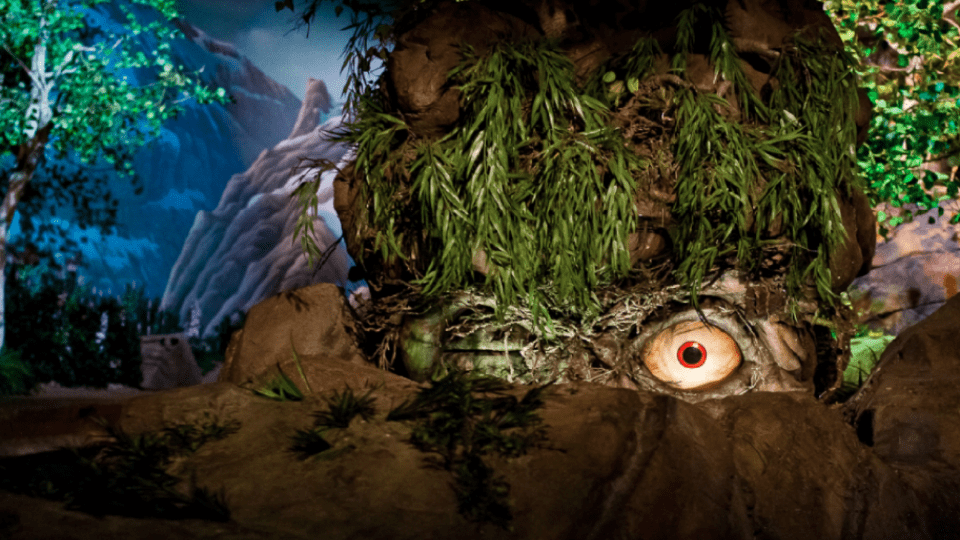
As time marches on, beloved lost rides like Maelstrom disappear into Valhalla. And so, here we are once more: as new generations of Disney Parks fans appear, there will come a time (and sooner than you think) when Maelstrom is but a hazy memory. Young fans will have barely heard of it, and certainly won’t understand what the “big deal” was. So let’s remind them. That’s why you’ll see links to our fabled, in-depth Lost Legends entries across the site…
But in today’s entry to our Legend Library, we’ll dive headfirst into the swirling waters of EPCOT’s lost Norwegian adventure to recount its history, record the experience, and look ahead to the future. As always, we’re counting on you to add your memories and impressions to preserve Maelstrom for a new generation.
And before we head off, remember that you can unlock rare concept art and audio streams in this story, access over 100 Extra Features, and recieve an annual Membership card and postcard art set in the mail by supporting this clickbait-free, in-depth, ad-free theme park storytelling site for as little as $2 / month! Become a Park Lore Member to join the story! Until then, let’s start at the beginning…
Meet the world
The story begins even before EPCOT Center’s 1982 opening. A vast divergence from anything Disney had done before, Walt Disney World’s unprecedented second gate seemed like a total revolution. But even if Orlando had never seen something quite like EPCOT, its foundation was actually that of a century-old tradition: a World’s Fair.
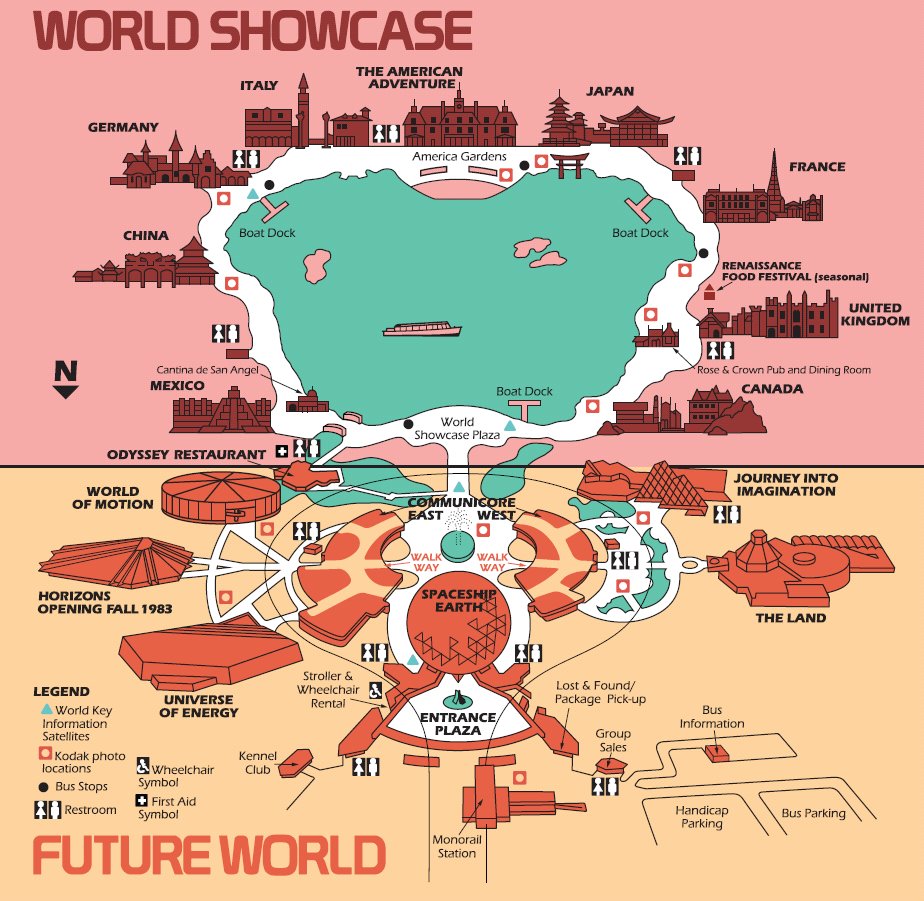
In fact, the two “realms” designed for EPCOT were intentional complements. The park’s northern half, Future World, was a corporate-funded showplace of innovation, ingenuity, and the power of enterprise, formed by gargantuan, monumental pavilions centered around topics of science and industry – a realm populated at its peak by beloved Lost Legends: Universe of Energy, Body Wars, Horizons, World of Motion, Journey into Imagination, Kitchen Kabaret, and The Living Seas.
Meanwhile, the park’s southern half, World Showcase, was instead a cultural expo, with pavilions dedicated to sharing the cuisine, customs, and exports of world nations. In fact, when EPCOT opened in 1982, World Showcase featured pavilions dedicated to nine nations: Canada, the United Kingdom, France, Japan, the United States, Italy, Germany, China, and Mexico. However, World Showcase had room for nineteen. That meant that, as of the park’s opening, ten pavilion-sized parcels of land were empty.
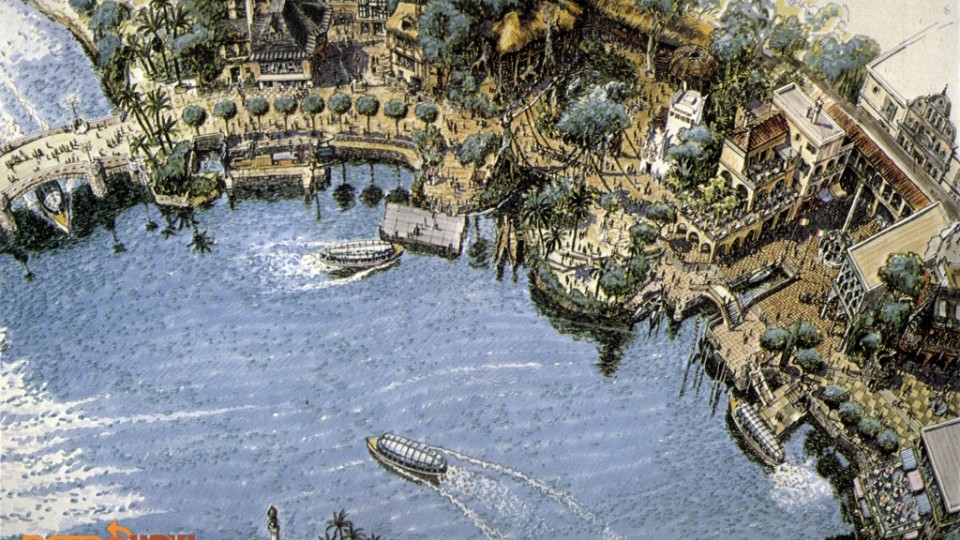
Why was more half of World Showcase vacant? A large part of that was certainly purposeful, to give the park room for expansion in the future – a necessary element of foundational park planning.
But frankly, securing the pavilions wasn’t as easy as Disney had imagined. In the original plans for Epcot presented in Disney’s 1975 Annual Report, World Showcase would:
“…offer participating countries a permanent installation for such features as themed restaurants and shops, product exhibits, industrial displays, cultural presentations, a trade center, and even special facilities for business meetings.
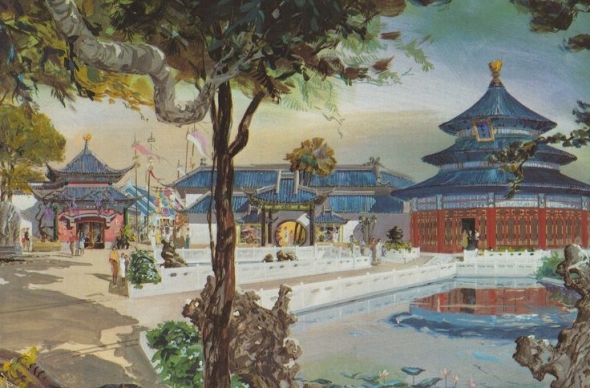
“Major sponsorships for each participating nation will be asked to provide the capital to cover the cost of designing, developing and constructing its attraction and/or ride and all exhibits, as well as the Pavilion itself. It will also have the responsibility for funding the housing for its employees in the International Village. Its land lease will cover the cost of maintaining the attraction for a minimum of ten years.
The Disney organization will be responsible for area development, including the construction of transportation systems and utilities. We will also build and operate the internal people moving system, the Courtyard of Nations and central theater facility.”

You might get the impression that Disney had signed itself up for a pretty sweet deal, and you’d be right. In the development of Epcot, Disney planned for a park that supported itself.
The idea was that corporations (in Future World) and the governments of countries (in World Showcase) would be motivated to keep their park offerings up-to-date. After all, no company would want its name broadcast across an out-of-date pavilion purporting to showcase the future, and no country would accept sub-par representation at its cultural “Epcot embassy.”
Surely, countries would pay Disney for their representation, then again to design, develop, and construct the pavilion. Countries would even pay to house their own citizens in Florida to staff the attractions. For Disney, it would be a win-win.
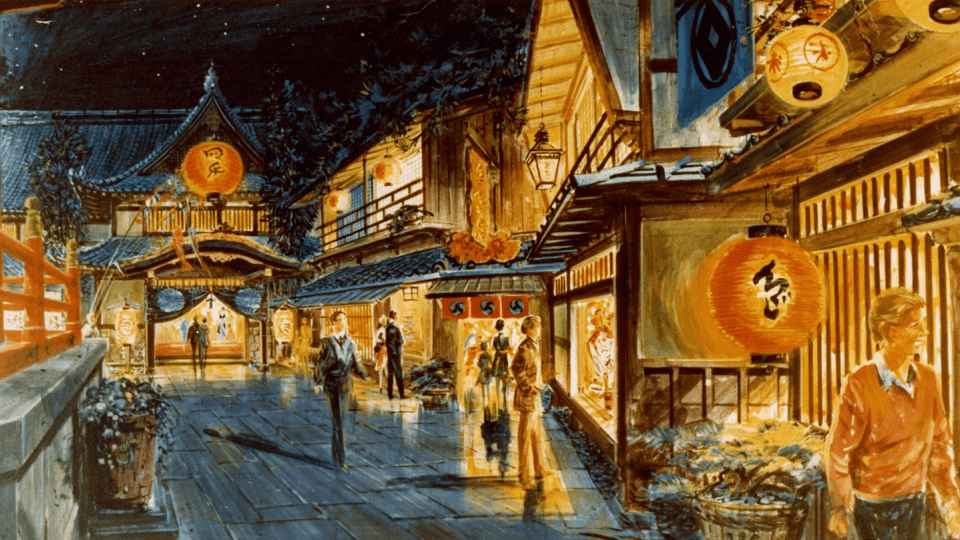
But when EPCOT Center opened in 1982, the model had shifted. Disney couldn’t find a single government willing to pay for a ten-year spot in the park. So instead, the countries that were present in World Showcase in 1982 were funded not by their governments, but by private corporations – the same model that had built the park’s Future World.
Of course, these private companies each had close affiliations to the represented countries and an inherent interest in their portrayal to Americans (for example, the Japan pavilion was sponsored by Japanese retailer Mitsukoshi).
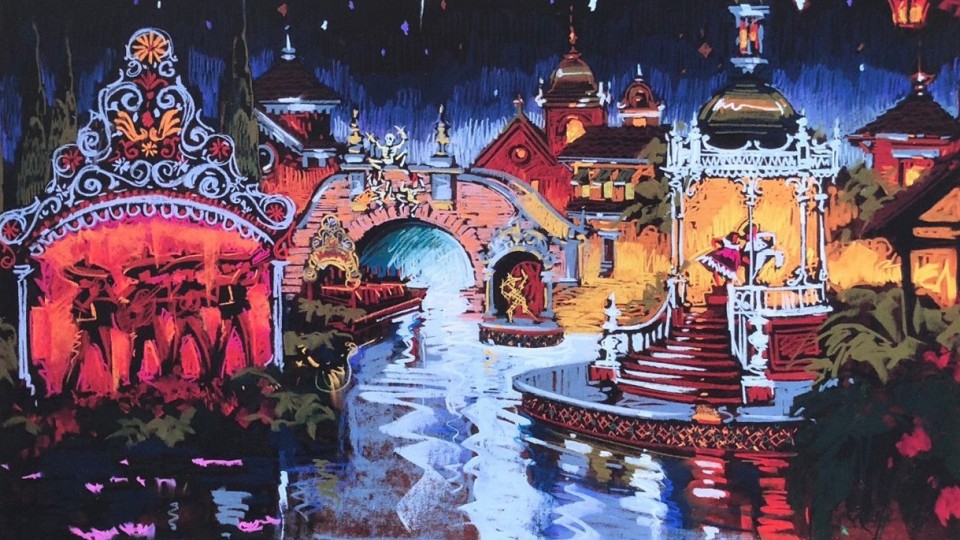
And of course, that makes sense… the financial investment Disney required to start up a World Showcase pavilion was substantial, and the resulting product would admittedly be more diversion than diplomacy. It’s probably also the reason that – despite Disney’s hopes – only one of the nine opening day World Showcase pavilions featured a ride: Mexico’s Rio Del Tiempo, a tranquil and simple cruise through the history of Mexico.
(Germany and Japan were both intended to house rides, but they were cancelled, leaving empty showbuildings attached to each. Two other pavilions – Canada and China – offered Circlevision travelogue films of their respective countries, while France presented a halved 180-degree film.)
Expanding the world
So at the time of the park’s opening, World Showcase offered nine pavilions – with just one ride between them. Still, Disney didn’t plan to let their cultural showplace stagnate with nothing but travelogue films and restaurants. At the very least, plans were in the works to begin filling those ten vacant slots around the World Showcase lagoon.
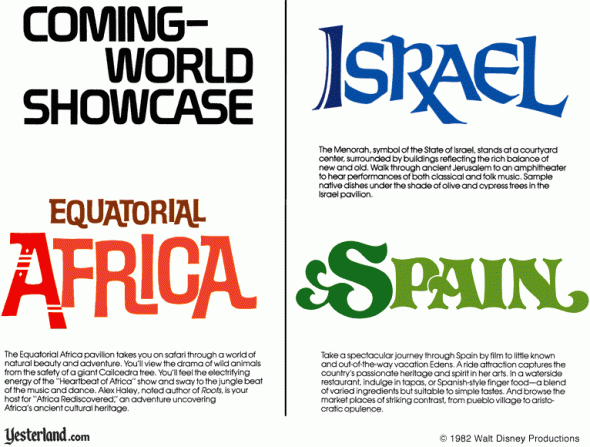
At the time of the park’s opening, pavilions dedicated to Israel, Equatorial Africa, and Spain were officially announced… but no earth ever moved on the projects. As Epcot followers know all-too-well, pavilions dedicated to Puerto Rico, Russia, Switzerland, Costa Rica, the United Arab Emirates, and Brazil have ranged from rumor to full-on concept art in the decades since…
However, a tenth pavilion did arrive in 1984. Situated between France and Japan, the Morocco pavilion was the first addition to World Showcase, and just two years after EPCOT’s opening. It was also the only pavilion directly funded by a government: the Kingdom of Morocco.
Only two years after that, earth would begin moving once more. Of the nine remaining vacant slots, one would be filled when Epcot’s eleventh (and to date, most recent) World Showcase plot became a construction zone in 1986.
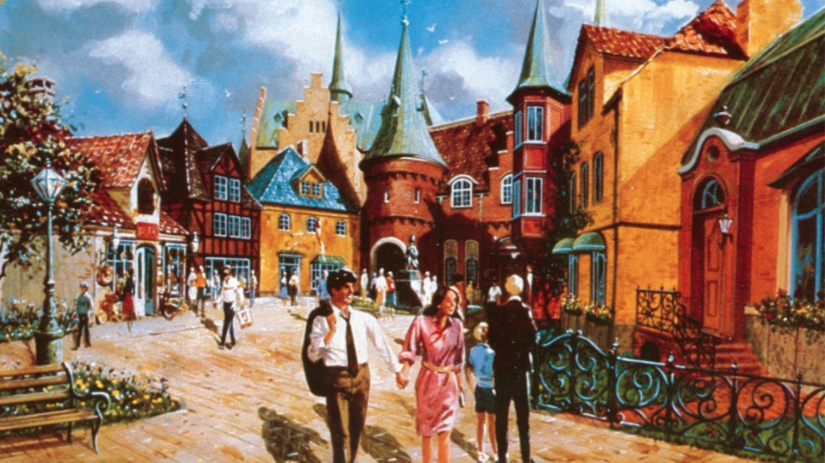
Located between Mexico and China, this eleventh plot was originally intended to represent the cultural region of Scandinavia (encompassing the countries of Norway, Sweden, and Denmark, as shown in the Passholder-exclusive rare concept art above). However, 11 companies representing Norway alone were able to raise the over $30 million required to create an exclusive single-nation pavilion.
Disney chipped in one-third of the construction costs, and the quest to open a Norway pavilion was underway… Read on…



This was a great article. I personally believe that Epcot should have nothing to do with Disney’s characters or the cinematic world of Disney. Don’t get me wrong, there is a place for that, and its not Epcot.. It’s every other Disney park. I went to Epcot the year it opened and have gone for many years after. I was there last year, and don’t feel the need to return any time soon, based on these particular changes. If Frozen is such a huge IP why not give it to the Magic Kingdom where it belongs with the other Disney classics. I feel that what they did to the park and the changes that they are being made, are wrong, and there is a better way to promote the park and bring more admissions.